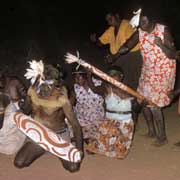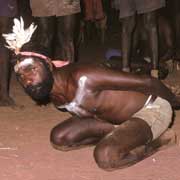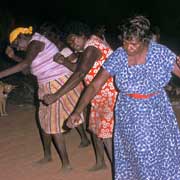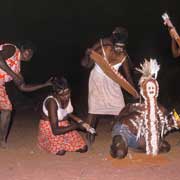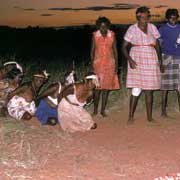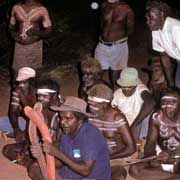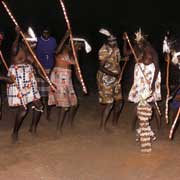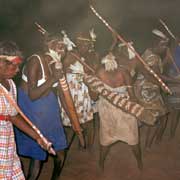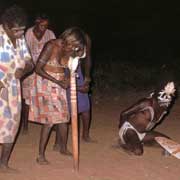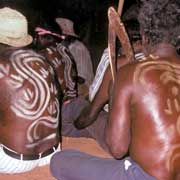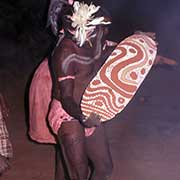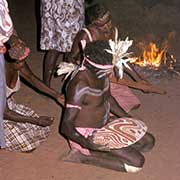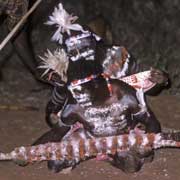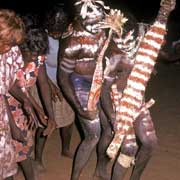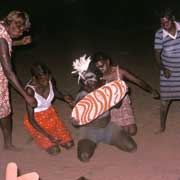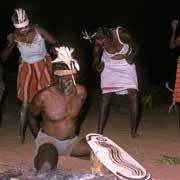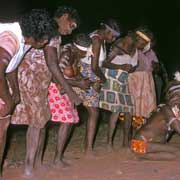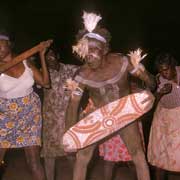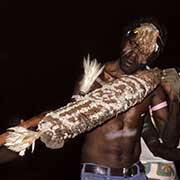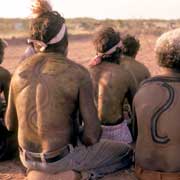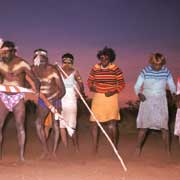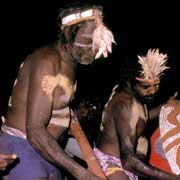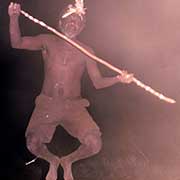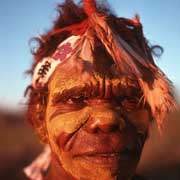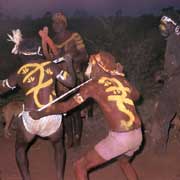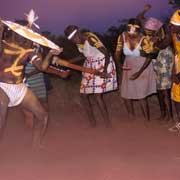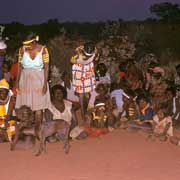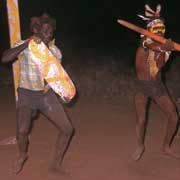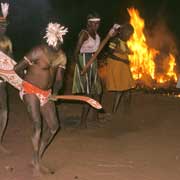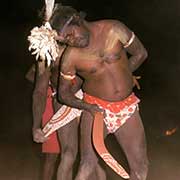Photos of Aboriginal Ceremonies of Central Australia - Jardiwanpa
Aboriginal Ceremonies of Central Australia - Jardiwanpa
The Aboriginal communities in the Centre are among the most traditional in Australia. The ancient rituals are still very important indeed. There are many secret and sacred ceremonies that may only be attended by initiated men or by boys undergoing initiation, but there are also very important ceremonies that are open to all. Sometimes these kinds of ceremonies have been described as "increase ceremonies" where it is believed that by performing the relevant rituals, species of animals and plants, important for survival, will increase and be abundant. These can thus be described as religious ceremonies; but prayer to ensure a favourable outcome is unknown: it is up to the participants, by doing the ceremonies properly.
you may then send it as a postcard if you wish.
Traditional Aboriginal society is strictly governed by kinship rules and is made up of two moieties, where members are born into; marriage takes place with members of the opposite moiety. Among the Top End people these moieties are generally referred to as "Yirritja" and "Dhuwa" (or similar terms, depending on the language), but among the central Australian people like the Warlpiri there are no separate names. But, as in most parts of the Northern Territory and beyond, each moiety is made up of four "skin" or subsection groups to whom everyone belongs; their "skin names" determine whom they can marry and what skin group their children will belong to. For example, a Jampijinpa man should marry a Napangardi woman; their son would be Jangala, their daughter Nangala. It is a very intricate system that has ensured, probably for thousands of years, the social cohesion and viability of Aboriginal groups all over Australia.
An example of a ceremony in which the whole community participates at all times is the "Jardiwanpa" ceremony. In this ceremony, taking place nightly over many weeks, men of the moiety to which the "skin groups" Jampijinpa, Jangala, Jakamarra and Jupurrula belong, perform dances and sing the chants relating to particular mythical "dreamtime" beings and the deeds they did in the mythological past at certain points along the "dreaming track" those beings followed. These men are called "kirda". the "owners" of the ceremony. The men are painted with designs on their backs, relating to those particular "Jukurrpa" or "dreamings"; they dance with wooden shields (called "kurdiji") on which the same designs have been painted, usually with white dots on a red ochre background; sometimes those designs are glued on with "wamurlu", a kind of wild cotton, coloured with red ochre and white clay. In some rituals a "mangaya" is used, a ceremonial object made from twigs bound together with hair string and decorated with this "wamurlu" vegetable down. Women of the opposite moiety (belonging to the "skin groups" Napangardi, Nungarrayi, Napaljarri and Napanangka) dance behind the main actors; they carry wooden "nulla nullas", heavy fighting sticks (called "kuturu"), also painted and decorated.
To make sure the ceremony is done properly, the men of the moiety, opposite to that of the "kirda" (owners) act as "policemen"; they are called "kurdungurlu" and they prepare the ceremony ground and the objects needed, they paint the dancers with the appropriate designs and accompany them by singing the ritual songs, accompanied by boomerangs ("karli"), clapped together in time. Thus the whole community ensures the rituals are done according to ancient and unchanging "Law", right until the final night, in which men dance with elaborate headdresses, a ceremonial pole is taken down by the women and large torches are set alight in a spectacular finale.



